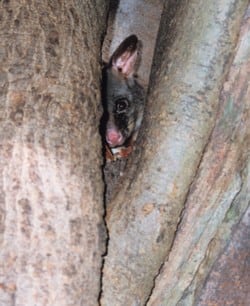Centennial Parklands is not only a beautiful recreational space for visitors, but also a sanctuary and breeding area for a wide variety of wildlife and knowing how to help injured animals can make all the difference in preserving and protecting the park’s delicate ecosystem.
Centennial Parklands is a beautiful, natural oasis that attracts over 10 million visitors every year. This urban sanctuary is home to a diverse range of wildlife, and visitors can expect to see a variety of animals depending on the time of day and season. However, it's important to remember that these animals are wild and should be respected and observed from a safe distance.
In this article, we'll cover some essential information on how to handle injured animals in Centennial Parklands and provide some helpful do's and don'ts for visitors.
To touch or not to touch?
If you come across an injured animal in Centennial Parklands, the first thing you should do is contact a Parklands Ranger. You can reach them at 0412 718 611 or by visiting the Parklands Office.
It's important to note that not all injured animals should be approached by humans, and visitors should not attempt to handle or touch the animal if possible. By contacting a Parklands Ranger, you can ensure that the animal receives the appropriate care and treatment.
When reporting an injured animal to a Parklands Ranger, it's essential to provide specific details:
- Location - In many cases, injured animals are young and still reside in a nest with their mother. By providing the ranger with the exact location of the injured animal, they can ensure that the infant is returned to the nest once it has healed.
- Extenuating circumstances - Visitors should also report any extenuating circumstances that may have led to the injury, such as rubbish, dogs, foxes, or cars. If possible, visitors should avoid removing obstacles from animals, as this can sometimes make the injury worse. Instead, leave it to the experts if it doesn't seem life-threatening.
If you do need to handle an injured a nimal
nimal
If you do need to handle an injured animal, it's essential to take some precautions to ensure that your intervention is a help and not a hindrance to the animal's health. By wrapping the whole animal in soft material and placing it in a carton or container, any damaged limbs are immobilized, and the animal is protected from further injury.
- Towels are the most appropriate material, but any soft cloth will do.
- Remember to cover the head as well, as this will often calm and relax the animal.
- Finally, make sure the carton or container is soft and won't damage the animal, and be careful not to bump the box when transporting the 'patient' to the rangers or local WIRES branch.
Helpful do's and don'ts
In addition to providing helpful tips on how to handle injured animals, there are some essential do's and don'ts that visitors to Centennial Parklands should be aware of.
Don't:
- Don't feed animals bread. While visitors may enjoy feeding bread to the ducks and other wildlife, they may not realise that they are actually causing harm. White bread has limited nutrients, and birds and other animals will continue to feast on this easy meal, ignoring their natural food sources and causing an imbalance in the ecological food chain. The bread can also contribute to water pollution, endangering the rich, native aquatic life of the many ponds in the Parklands.
- Don't feed the pigeons. Pigeon populations, particularly near Duck Pond, are on the rise and are a very real pest. They can spread diseases among humans and animals and cause chemical deterioration to the Parklands buildings and infrastructure with their droppings.
Do:
- Visitors can help protect the wildlife and environment of Centennial Parklands by cleaning up any rubbish they see, particularly plastic products. Every plastic bag is capable of killing a whole range of native wildlife, and its removal will certainly reduce injury to animals.
- Visitors should also note the exact details of the location of any injured animals, right down to the specific tree or scrub. Remember to leave your name and phone number with the rangers in case any further information is required.